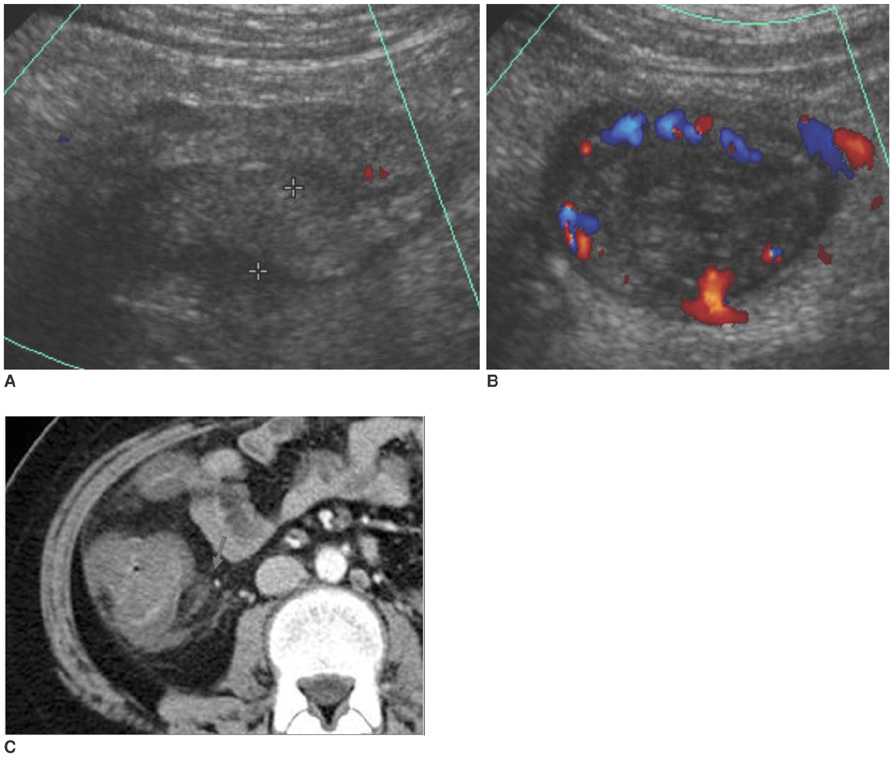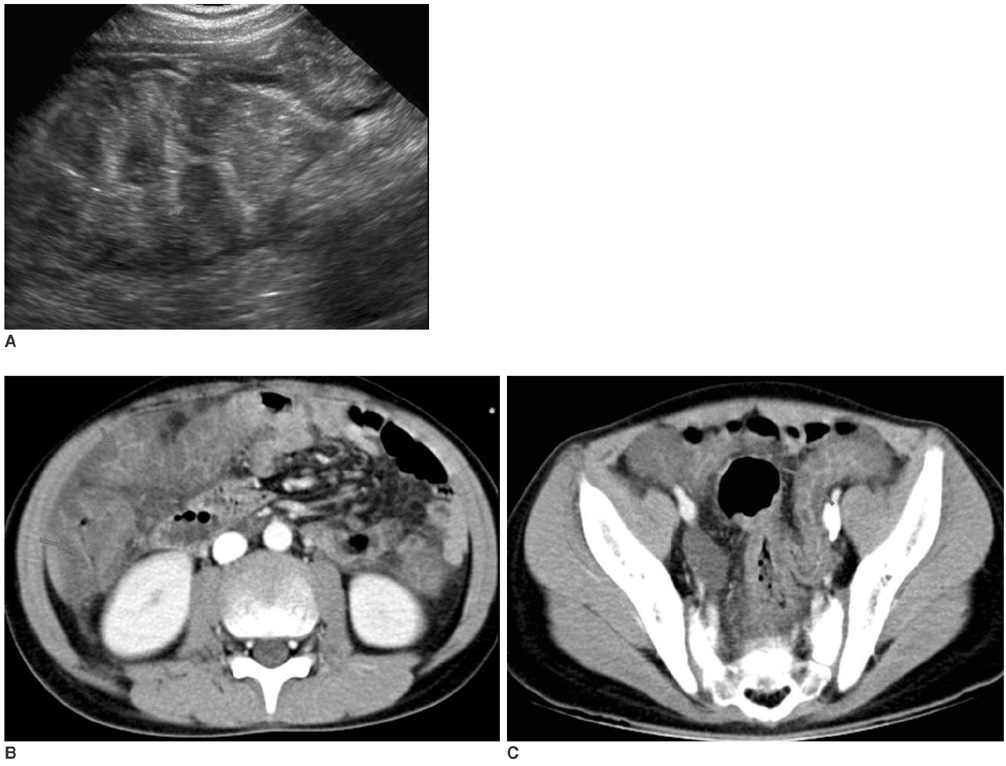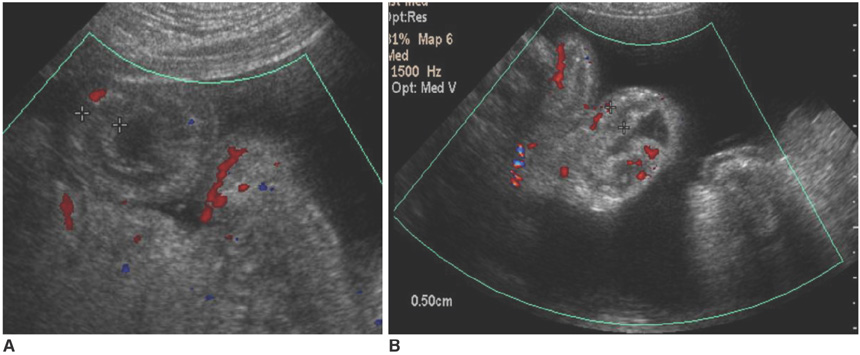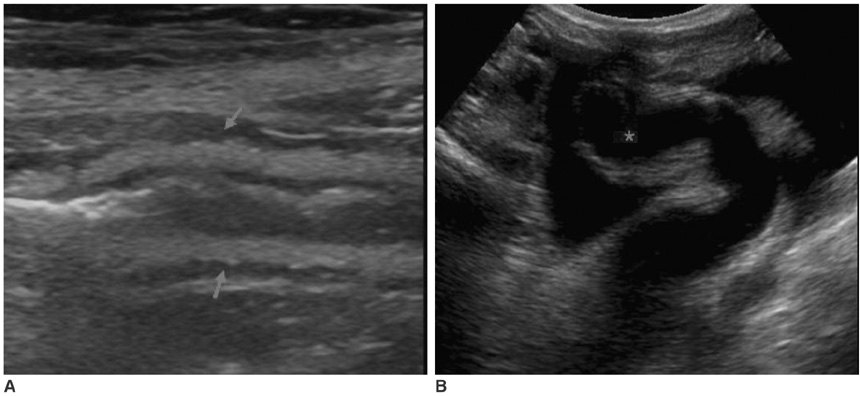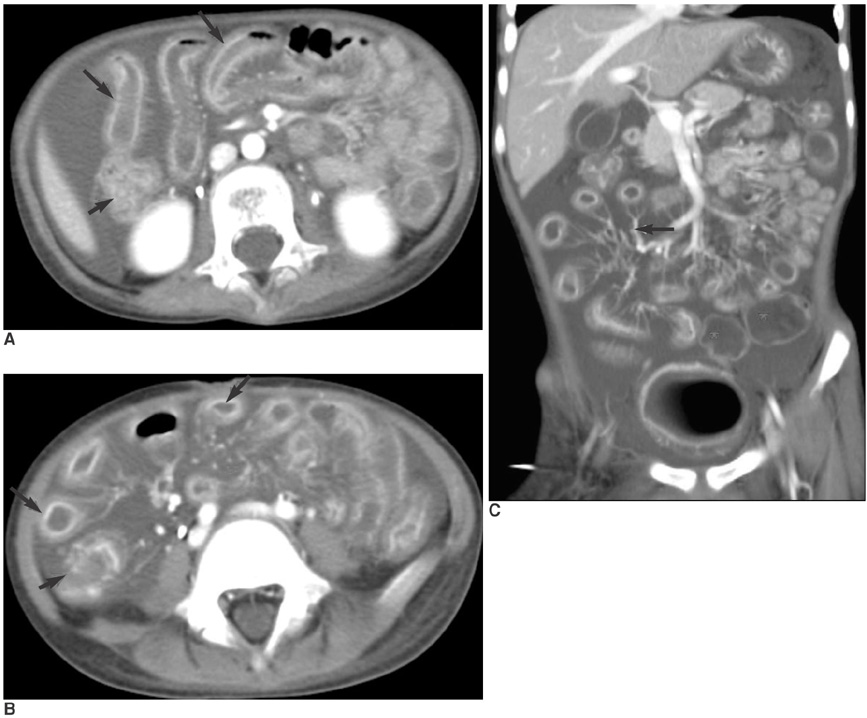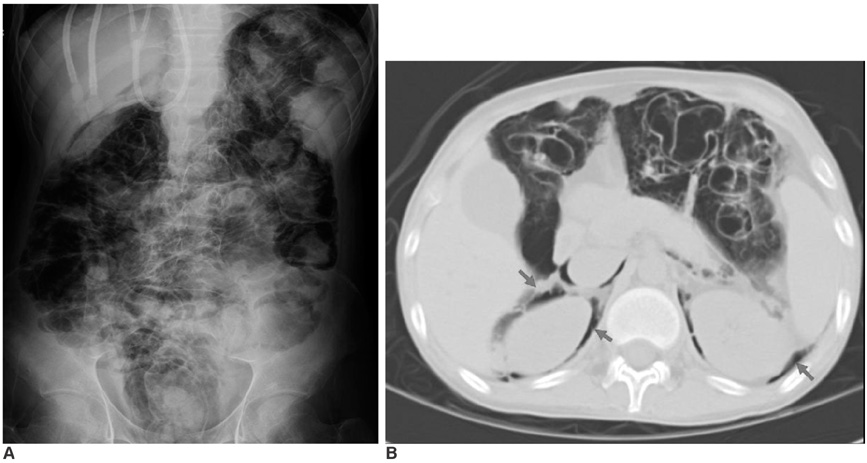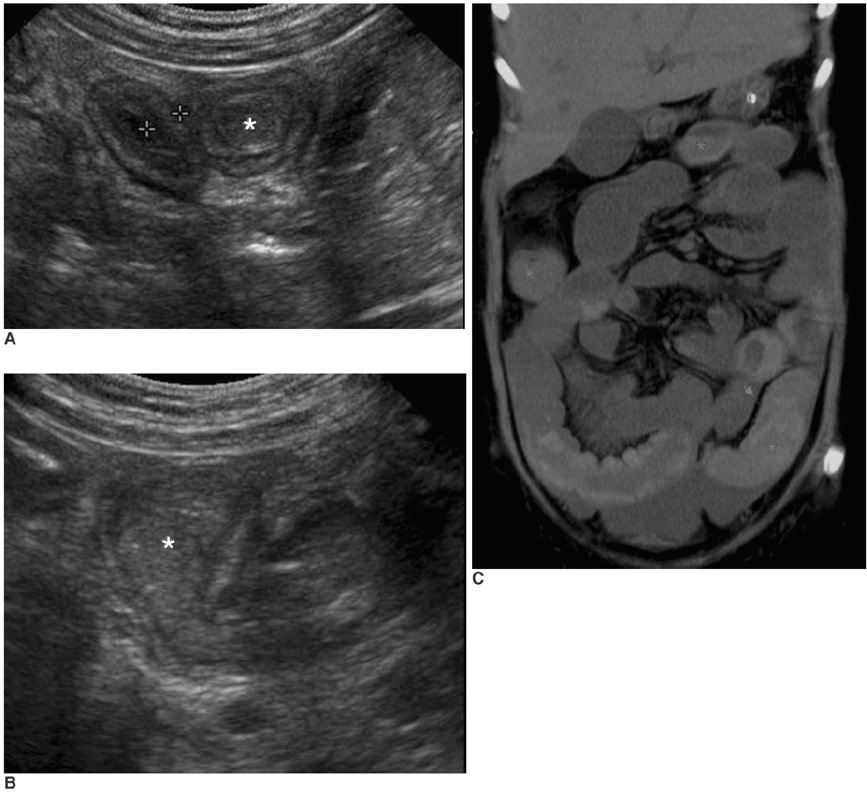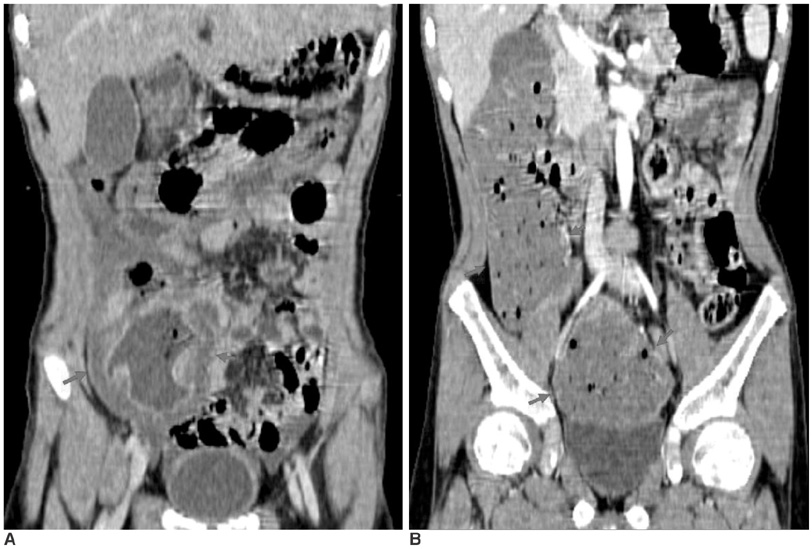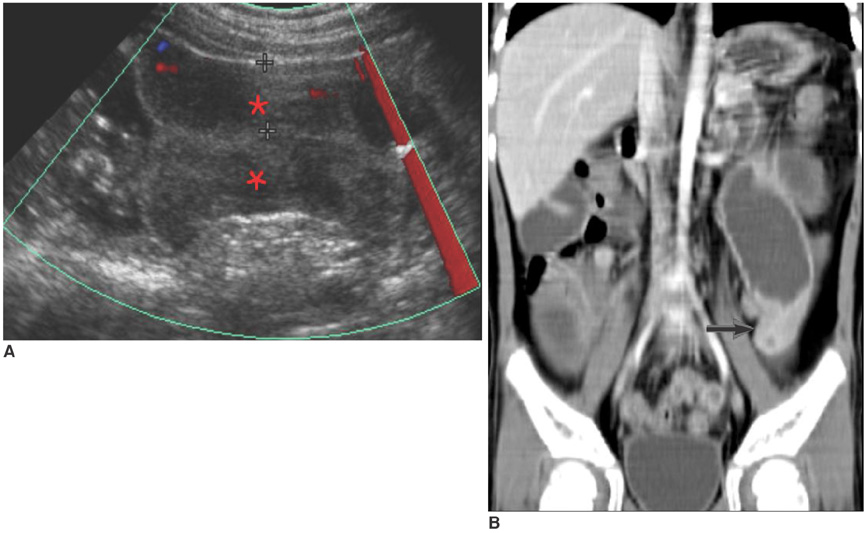Korean J Radiol.
2008 Oct;9(5):449-457. 10.3348/kjr.2008.9.5.449.
Gastrointestinal Complications Following Hematopoietic Stem Cell Transplantation in Children
- Affiliations
-
- 1Department of Radiology, St. Mary's Hospital, The Catholic University of Korea, Seoul, Korea. shlgy@catholic.ac.kr
- 2Department of Pediatrics, St. Mary's Hospital, The Catholic University of Korea, Seoul, Korea.
- KMID: 1385404
- DOI: http://doi.org/10.3348/kjr.2008.9.5.449
Abstract
- Gastrointestinal system involvement is one of the principal complications seen in the recipients of hematopoietic stem cell transplantation (HSCT), and it is also a major cause of morbidity and death in these patients. The major gastrointestinal complications include typhlitis (neutropenic enterocolitis), pseudomembranous enterocolitis, viral enteritis, graft-versus-host disease, benign pneumatosis intestinalis, intestinal thrombotic microangiopathy, and post-transplantation lymphoproliferative disease. As these patients present with nonspecific abdominal symptoms, evaluation with using such imaging modalities as ultrasonography and CT is essential in order to assess the extent of gastrointestinal involvement and to diagnose these complications. We present here a pictorial review of the imaging features and other factors involved in the diagnosis of these gastrointestinal complications in pediatric HSCT recipients.
MeSH Terms
Figure
Reference
-
1. Benya EC, Sivit CJ, Quinones RR. Abdominal complications after bone marrow transplantation in children: sonographic and CT findings. AJR Am J Roentgenol. 1993. 161:1023–1027.2. Jones B, Fishman EK, Kramer SS, Siegelman SS, Saral R, Beschorner WE, et al. Computed tomography of gastrointestinal inflammation after bone marrow transplantation. AJR Am J Roentgenol. 1986. 146:691–695.3. Barker CC, Anderson RA, Sauve RS, Butzner JD. GI complications in pediatric patients post-BMT. Bone Marrow Transplant. 2005. 36:51–58.4. Coy DL, Ormazabal A, Godwin JD, Lalani T. Imaging evaluation of pulmonary and abdominal complications following hematopoietic stem cell transplantation. Radiographics. 2005. 25:305–317.5. Bolton RP, Thomas DF. Pseudomembranous colitis in children and adults. Br J Hosp Med. 1086. 35:37–42.6. Donnelly LF, Morris CL. Acute graft-versus-host disease in children: abdominal CT findings. Radiology. 1996. 199:265–268.7. Mentzel HJ, Kentouche K, Kosmehl H, Gruhn B, Vogt S, Sauerbrey A, et al. US and MRI of gastrointestinal graft-versus-host disease. Pediatr Radiol. 2002. 32:195–198.8. Fisk JD, Shulman HM, Greening RR, McDonald GB, Sale GE, Thomas ED. Gastrointestinal radiographic features of human graft-vs.-host disease. AJR Am J Roentgenol. 1981. 136:329–336.9. Day DL, Ramsay NK, Letourneau JG. Pneumatosis intestinalis after bone marrow transplantation. AJR Am J Roentgenol. 1988. 151:85–87.10. Nishida T, Hamaguchi M, Hirabayashi N, Haneda M, Terakura S, Atsuta Y, et al. Intestinal thrombotic microangiopathy after allogeneic bone marrow trasplanatation: a clinical imitator of acute enteric graft-versus-host disease. Bone Marrow Transplant. 2004. 33:1143–1150.11. Narimatsu H, Kami M, Hara S, Matsumura T, Miyakoshi S, Kusumi E, et al. Intestinal thrombotic microangiopathy following reduced-intensity umbilical cord blood transplantation. Bone Marrow Transplant. 2005. 36:517–523.12. Lim GY, Newman B, Kurland G, Webber SA. Post transplantation lymphoproliferative disorder: manifestations in pediatric thoracic organ recipients. Radiology. 2002. 222:699–708.13. Lones MA, Kirov I, Said JW, Shintaku IP, Neudorf S. Post-transplant lymphoproliferative disorder after autologous peripheral stem cell transplantation in a pediatric patient. Bone Marrow Transplant. 2000. 26:1021–1024.
- Full Text Links
- Actions
-
Cited
- CITED
-
- Close
- Share
- Similar articles
-
- Opening the era of in vivo xenotransplantation model for hematopoietic stem cell transplantation
- Hematopoietic Stem Cell Transplantation
- Hematopoietic Stem Cell Transplantation in Inborn Error of Metabolism
- Educational Needs of Families of Children Undergoing Hematopoietic Stem Cell Transplantation
- In utero hematopoietic stem cell therapy

